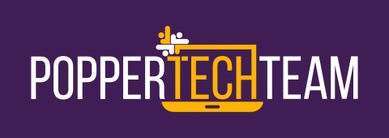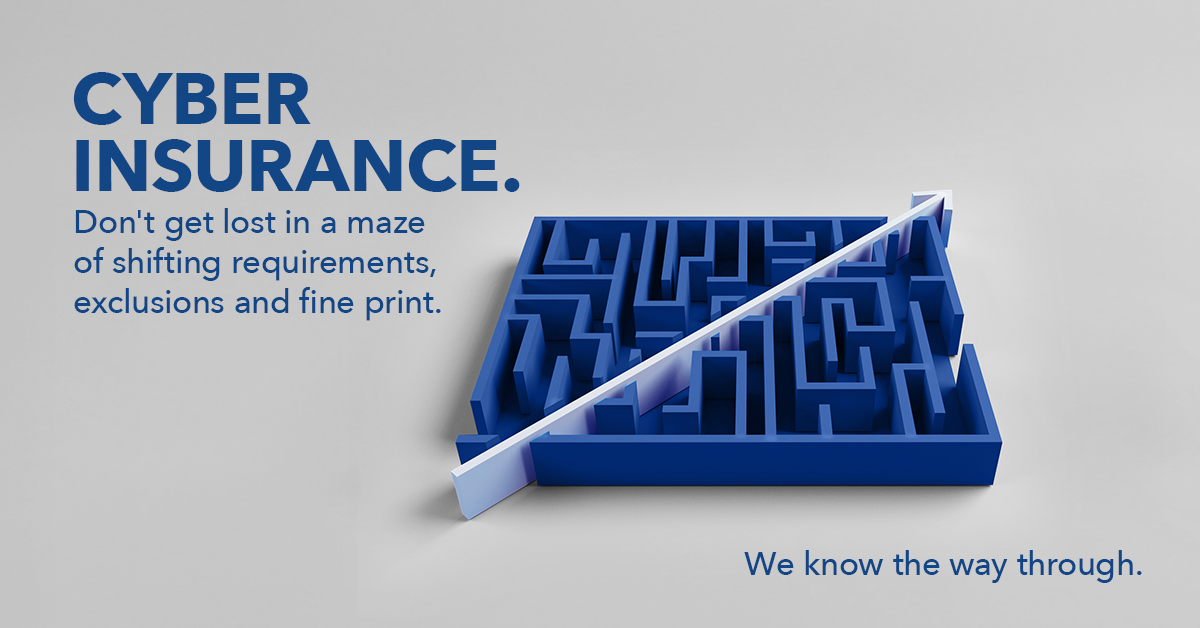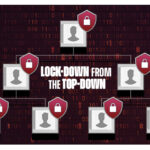Let's blog about it...
7 Extinction – Level Cybersecurity Threats
The dinosaurs never saw their end coming. The same is true for businesses that don’t understand what an extinction-level cyberthreat can do to their business and its future. Cyber incidents have become routine, and all businesses, regardless of their size, are at risk. From AI-powered ransomware to supply chain compromises, today’s cybersecurity threats are smarter and harder to predict. What’s even scarier is that they’re evolving faster than traditional defenses can keep up. In this blog, we’ll break down the top extinction-level cyberthreats every business leader should know. You’ll gain the clarity and insight you need to make smarter security decisions and stay one step ahead of what’s coming next. The threat landscape: What you’re up against Not all cyberthreats are created equal. Some are disruptive, but others can incapacitate your business entirely. These are extinction-level events, and they demand serious attention. AI-powered ransomware For cybercriminals, ransomware is a profitable enterprise, and with AI, they can do more harm than before. Gone are the days when attackers would cast their nets wide, trying to bait anyone who would fall for their scam. Today’s scams are highly sophisticated. Cyber criminals now use AI to analyze targets, identify weak points and lock...
The Anatomy of a Cyber – Ready Business
Cyberattacks are no longer rare events. Every business, from startups to established companies, faces digital risks that can disrupt operations and compromise customer trust. Fortunately, preparing for these threats doesn’t require a huge budget or large teams. With a few intentional actions, you can strengthen your defenses and build a more resilient business. Proactive habits create safety nets before any crisis hits. By taking steps today, you'll minimize surprises tomorrow and reduce the impact if something does go wrong. The building blocks of cyber readiness Lasting cybersecurity starts with practical pillars that reinforce one another. Focusing on these areas gives your organization a clear, workable path to stay protected. Risk awareness Good protection starts with knowing what matters most. Take time to map out the data, systems and information that are vital to your daily work. Spotting your high-value assets and understanding possible threats lets you focus resources where they matter most. Routine checks help you catch any new vulnerabilities before someone else does. Prevention and protection Strong cybersecurity relies on more than just software or firewalls. Keeping systems updated, using reliable antivirus tools and managing who has access to sensitive areas should all work together. When only trusted people...
Business Impact Analysis 101 for Business Leaders
Disasters aren’t always the biggest threat to your business; uncertainty often is. Many leaders assume they’ll know what to do when things go wrong. But without clarity on what’s critical to keep operations running, even minor disruptions can spiral. That’s why successful business owners consider a business impact analysis (BIA)to be a foundational part of their business continuity and disaster recovery (BCDR) strategy. What is a BIA? A BIA helps eliminate guesswork. It provides clarity to help businesses understand what is critical to operations, how long they can afford to stay offline and how soon they can get back online. A well-executed BIA goes beyond resolving IT issues; it offers a full picture of operations and empowers business leaders to prioritize recovery efforts based on factors such as urgency, risk and cost. Without a BIA, organizations tend to be reactive, leading to decisions that a rem is aligned with actual business needs. In short, a BIA positions you to recover faster with less disruption. Key component sofa BIA A strong BIA helps you turn your BCDR strategy into something actionable. It aligns recovery priorities with what truly drives value, like essential operations, customer expectations and long-term stability. Here’s a quick...
BCDR vs. Backup: What’s the Difference for Your Business?
When your business grinds to a halt, every minute feels like a countdown. A server crash, ransomware attack or even a simple power outage can throw operations off track. That’s when the question hits hard: Can you bounce back quickly enough to keep customers and revenue safe? It’s easy to assume backups are enough, but that’s only part of the picture. Backups preserve data, but they don’t restore your systems, applications or processes. That’s the role of a business continuity and disaster recovery (BCDR)plan. It’s the difference between having a backup of your data and having your entire business operational when things go wrong. Why backup sand BCDR must work together While backups restore what you had, a BCDR plan ensures you can keep running. A cyberattack can encrypt your systems, a flood can knock out your hard ware or a simple misconfiguration can lock users out of critical tools. Even with perfect backups, you can still face days of downtime. Downtime is expensive and can cost you more than lost revenue. It damages customer trust, stalls operations and causes missed opportunities. Without a BCDR plan, you’re patching holes instead of steering the ship. That’s why a strong strategy combines...
Facing the Fear: Why Now Is the Time to Embrace AI
On the left, fear grips a CEO as sales plummet and competitors thrive with AI. On the right, success shines through as AI drives growth and confidence. Facing the Fear: Why Now Is the Time to Embrace AI There’s no question that AI is a game changer. From transforming how we work to unlocking new business models, AI has the power to dramatically accelerate both company-wide productivity and individual performance. Whether it’s automating repetitive tasks, surfacing insights faster, or enabling entirely new ways of thinking, AI is already reshaping the future of work. But despite the promise, one thing continues to hold us back: fear. 👔 Executive Fear: “Will AI Make Us Obsolete?” At the leadership level, the fear is existential. What if AI disrupts our current business model? What if competitors adopt faster and leave us behind? These are valid concerns—but they’re also signals that it’s time to act. The companies that win in the AI era won’t be the ones who wait. They’ll be the ones who lead with clarity, communicate transparently, and build AI into their strategy. If you’re an executive, now is the time to: Adopt an AI policy that clearly outlines your goals and strategic...
IT and Cyber Insurance: Why You Can’t Afford to Ignore Either
Cyberthreats are evolving fast, especially with the rise of AI-powered attacks. That's why a solid IT strategy is your first line of defense, while cyber insurance acts as your financial safety net when threats break through. In this blog, we'll explore why combining a strong IT strategy with comprehensive cyber insurance isn't just smart—it's essential for protecting your business in today's AI-driven threat landscape. How IT and Insurance work together Many businesses mistakenly view IT and cyber insurance as unrelated, but in reality, they should work together to strengthen your overall resilience. A strong IT strategy not only protects your business but also improves your eligibility for cyber coverage and helps you get the most from your policy. An experienced IT service provider can guide you through this process and help you qualify and maintain your coverage. Here's how: Assess your current security posture: Your IT partner will evaluate your current landscape, identify vulnerabilities and develop a plan of action. On going risk assessments strengthen your defense sand demonstrate to insurers that you actively manage risk and prioritize data protection. Implement required controls and best practices: Once gaps are identified, your IT service provider will implement the proper security measures...
Cyber Insurance Basics : What Every Business Needs to Know
Cyber attacks rarely come with a warning, and when they hit, the damage can be fast and costly. From data recovery to managing the fallout, a single breach can derail your operations for days or weeks.That’s where cyber insurance can step into reduce the financial impact of an attack.However, not all policies offer the same protection. What is and isn’t covered often depends on whether your business met the insurer’s security expectations before the incident.In the sections ahead, we’ll break down what that means and how to prepare.What is cyber insurance and why does it matter?Cyber insurance is a policy designed to help businesses recover from digital threats like data breaches and ransomware attacks. It can cover the cost of cleanup when systems are compromised and reputations are on the line.Depending on the policy, cyber insurance may cover:Data recovery and system restorationLegal fees and regulatory finesCustomer notification and credit monitoringBusiness interruption lossesRansom payments (in some cases)While cyber insurance is a smart investment, getting insured is only the first step. What you do afterward, like maintaining strong cyber hygiene, can determine whether your claim holds up.Why cyber insurance claims are often deniedA cyber insurance policy doesn’t guarantee a payout. Insurers carefully...
The Role of IT Service Providers in Mitigating IT Risks
In today’s fast-moving business landscape, change is constant and often unpredictable. Markets can be disruptive, volatile and even devastating. As a business leader, one of your most pressing concerns should be: Can your IT strategy withstand the pressure when things get tough? Are you keeping pace with emerging technologies? And is your infrastructure equipped to handle the ever-evolving landscape of cybersecurity threats? That’s where a strategic IT partner comes in. The right IT service provider doesn’t just react to risks—they anticipate them. They build resilient systems that can absorb the shocks of economic turbulence and cyberattacks. In this blog post, we’ll explore how IT service providers help you mitigate risk and, most importantly, what makes one truly reliable. Let’s dive in. What makes an IT service provider reliable A reliable service provider gives you the confidence to navigate the worst storms. Here’s how a reliable service provider keeps your business safe and reduces risks: Proven experience and expertise: A reliable service provider has a track record of successfully managing IT for businesses like yours. They also have an army of highly skilled and trained IT professionals who keep up with the latest tech trends and best practices so they can...
Top 4 Business Risks of Ignoring IT Strategy
A weak technology strategy rarely announces it self. At first, it may look like a few scattered tech issues, such a slagging systems, integration failure and unexpected system out ages. In reality, these aren’t random problems but signs of a deeper issue: an IT strategy that hasn’t kept up with the business. Most companies don’t intentionally overlook strategy; it just falls behind while day-to-day operations take over. But without a clear roadmap, the cracks start to show fast. In this blog, we’ll discuss the top four business risks of ignoring your IT strategy and why addressing it early matters. The fallout of a poor IT strategy A risky IT strategy impacts more than your tech stack. It affects how your business runs, grows and stays competitive. Operational disruptions Without a structured IT roadmap that prioritizes coordination, your tools and platforms start working in silos. Updates clash, integrations break and routine processes turn into time-consuming work arounds. What should be seamless becomes a source of friction. Your team ends up wasting time fixing problems that a proper strategy would have prevented. Reputational damage Customers and partners may not see the backend, but they definitely feel its failures. Whether it’s a delayed...
Who Touches Money in Your Organization?
Anyone who moves money is a target—and a responsibility. Who Touches Money? In every business, there are people who manage, move, and authorize the flow of funds. These individuals aren’t just important to your operations—they’re prime targets for cybercriminals. If someone touches money, they touch risk. And your job is to protect them—and your business. Why Financial Roles Are High-Risk Targets Cyberattacks don’t happen at random. They’re engineered. And threat actors know exactly where to aim: Accounts payable Payroll Finance managers Executives with wire transfer approval Anyone with access to banking platforms or sensitive customer data These team members are targeted with phishing emails, business email compromise (BEC) scams, and social engineering attacks designed to trick them into wiring funds, revealing credentials, or paying fake invoices. Real-World Example A CFO receives an urgent email from the CEO—asking for a wire transfer to close a deal. The email looks legitimate. The language sounds right. The pressure is high. The problem? It wasn’t the CEO. It was a cybercriminal who had studied the organization and spoofed the email address. One click. One transfer. One mistake. Tens of thousands lost. Questions Every Business Should Ask Who in your organization can authorize payments? Who...
Your Weakest Point Is Your Weakest User
Your Weakest Point Is Your Weakest User In cybersecurity, the strongest firewall, most advanced encryption, and latest security software can all be undone by one careless click. That’s why the harsh truth is this: your weakest point is your weakest user. The Human Factor in Cybersecurity While businesses invest heavily in IT infrastructure, many overlook the most exploited vulnerability—human behavior. Social engineering, phishing, and credential theft remain top attack methods because they target people, not machines. According to Verizon’s Data Breach Investigations Report, over 80% of breaches involve the human element. This includes employees clicking on malicious links, using weak passwords, or unknowingly granting access to cybercriminals. Real-World Impact It only takes one person: Opening an infected attachment. Reusing a password across work and personal accounts. Approving an MFA prompt they didn’t initiate. And just like that, attackers have a foothold into your network. Strengthening Your Human Firewall Here’s how to reduce user-based vulnerabilities: 1. Ongoing Security Awareness Training Train your staff regularly—not just once a year. Make it engaging and scenario-based so users can recognize phishing, vishing, smishing, and pretexting in real life. 2. Simulated Phishing Campaigns Test your users with fake phishing emails. Track who clicks, who...
You Can’t Outsource Responsibility
📝 You Can’t Outsource Responsibility Responsibility flows downward—but accountability can't be passed along. Why relying on third-party vendors doesn’t exempt you from accountability in cybersecurity In today’s digital-first world, organizations of all sizes rely on third-party vendors to manage IT, cloud services, and security infrastructure. This makes sense—outsourcing brings expertise, efficiency, and scalability. But there’s one thing you can never outsource: Responsibility. A recent incident involving a prominent nonprofit in San Francisco highlights this truth. The organization experienced a ransomware attack that exposed sensitive donor and customer data. While the technical services had been outsourced, the public and legal backlash fell squarely on the organization itself—not the vendor. Why? Because your customers don’t care who manages your systems. They care that their data is safe. 🔐 What This Means for Your Organization 1. You are still accountable—no matter who you hire. Your name is on the domain, the donation page, and the privacy policy. If something goes wrong, clients, regulators, and the media will look to you, not your MSP or hosting provider. 2. Vendor oversight is a cybersecurity control. Hiring a third-party vendor doesn’t end your responsibility—it begins a new phase of oversight. Are they following...
Watch Out for These Phishing and Social Engineering Techniques
As a business owner, you understand the risks that phishing and social engineering attacks pose to your business. But the challenge now for leaders like you is that these threats are constantly evolving and have become more sophisticated than ever. What should concern you most is that hackers are targeting your employees. One mistake by an untrained employee can have serious financial and reputational damage. That’s why you should make awareness your first line of defense. In this blog, we’ll show you what to watch out for. The better you understand the se phishing and social engineering techniques, the better you’ll be able to protect your business. Common tactics used by attackers Gone are the days when bad grammar was a telltale sign of a phishing attempt. Thanks to AI, hackers have levelled up their game. Here are some common tactics they’ re using to lure their victims: URL spoofing: Imagine walking into your favorite ice cream shop to discover that it only looks familiar because the store copied the logo and brand colors, but it’s actually a fake store. Similarly, hackers overlay the image of an authentic website with a malicious link. The website uses the logo, URL, color...
Social Engineering Attacks: The Secret Behind Why They Work
Cybercriminals don’t need to use brute force or write malicious code to break into your systems. All they need to do is target your people. That’s what social engineering is all about. It’s a method that relies on psychological manipulation to bypass technical safeguards to get inside your business and take harmful action. These attacks come in many forms. You might recognize terms like phishing, baiting and tailgating. Each one uses a slightly different approach, but the objective is the same: to manipulate someone’s response. The goal of this blog is to help you understand the psychology behind th ese attacks and show you how to protect your team before they become the next target. The psychology behind social engineering Social engineering succeeds because it targets human instincts. Humans are built to trust when nothing appears to be clearly suspicious. Attackers know this, and they use that knowledge to influence our behavior. Once that trust is triggered, they rely on a set of psychological techniques to push you to act: Authority: The attacker pretends to be someone in a position of power, such as your manager or finance head, and sends a request that feels urgent and non - negotiable....
Why Cloud Security Matters for Your Business
You moved to the cloud for speed, scalability and savings. You stayed because it gave you flexibility, faster deployments and easy access across teams. But while the benefits are real, so are the risks. One wrong click or downloading one corrupted file can open a crack—and someone out there is always looking to slip through it. Let’s be blunt. Cybercriminals don’t care how small or big you are. They only care about one thing: access. And if your cloud environment gives them an easy way in, they’ll take it without hesitation. Here are just a few threats lurking in the cloud: Data breaches: If your cloud storage isn’t properly secured, sensitive customer or financial data can be leaked, stolen or exposed. Account hijacking: Weak or reused passwords make it easy for attackers to impersonate users and move laterally across your systems. Misconfigured settings: A single unchecked box or open port can turn your infrastructure into a public playground for threat actors. Insider threats: Sometimes, the breach doesn’t come from the outside. Employees—intentionally or accidentally—compromise access, leak files or invite in malware without realizing it. So, the question is: who’s responsible for your data? Cloud security isn’t automatic Here’s the hard...
Protecting Your Business in the Cloud: What’s Your Role?
The cloud gives you the flexibility to run your business from anywhere, the efficiency to enhance your team’s performance and a strategic edge to stay ahead of competitors without a huge cost. But here’s the thing—it’s not all sunshine and rainbows. Business on the cloud carries risks that cannot be ignored. Business owners often have this misconception that once their data is in the cloud, it’s fully protected by the cloud service provider. But that’s not quite how it works. Instead, it’s more o fa team effort, and you have a crucial role to play. The shared responsibility model When it comes to securing cloud data, both the cloud service provider and the customer have specific responsibilities they are obligated to fulfill. This cloud security practice is called the shared responsibility model. However, if you don’t know which security tasks are your responsibility, there maybe gaps that leave you vulnerable without you realizing it. The trick to keeping your cloud secure is knowing where the cloud provider’s job ends and yours begins. This starts with analyzing your agreement to understand what specific security roles are with the provider and what remains within your purview. What’s your responsibility? While every cloud...
3 Reasons to Partner with an Excellent IT Service Provider
Running a business is a balancing act. You’re constantly managing growth, operations and security while trying to stay competitive. But as technology evolves, so do the challenges. Cyberthreats are more sophisticated, compliance requirements keep changing and downtime is more expensive than ever. Without the right IT expertise, these challenges can slow you down. That’s why you need to turn to IT service providers. They don’t just handle tech issues when something breaks. They help you prevent problems, streamline operations and ensure your IT investments work for your business. Let’s take a closer look at why partnering with an IT service provider must be a top priority. The three core benefits of IT service providers Choosing an IT partner is more than just outsourcing IT tasks. It’s about equipping your business with the right tools, expertise and strategies to grow without disruption. Here are the three ways in which the right IT service provider can make a difference: Bridging knowledge gaps Technology moves fast ,and without expert guidance, you might fall behind or leave vulnerabilities unchecked. An IT service provider brings deep expertise across key areas: Cybersecurity: Helps protect your business from cyberthreats by implementing strict security measures and conducting regular...
The Hidden Costs of Reactive IT: Why a Proactive Approach I s Worth the Investment
Think about the last time an unplanned IT problem disrupted your business operations. Maybe it was a cyberattack, a server crash or a slow network that affected the daily workings of your business. How much precious time did you lose? How much frustration did it bring to you and your customers? This is the cost of reactive IT: unplanned downtime, lost revenue and unnecessary frustration. In this blog, we'll help you understand how reactive IT affects your business. We’ll also explain the power of proactive IT and how it helps build a resilient , future - ready business. The real cost of reactive IT Let’s dive into what reactive IT looks like and how this impacts your business operationally and financially: Issue resolution: It's like an endless loop where your team is always in fire-fighting mode. You’re constantly busy responding to emergencies and unplanned outages. You have no time to focus on strategic initiatives , as your resources are being spent attending to roadblocks. What it costs you: Lost productivity. Short term solutions: If there's a crack in your ceiling, it needs repair and your full attention. A quick fix won't make the issue go away. In IT, if you...
5 Strategic IT Initiatives to Drive Your Business Forward
In today’s fast-paced digital world, businesses must leverage technology to stay competitive, secure, and profitable. At Popper Tech Team, we believe in five key IT initiatives that can maximize productivity, streamline operations, and secure your business from threats. Here’s how: 1️⃣ 7x24x365 Support: Keeping Your Business Running Anytime, Anywhere Your business doesn’t stop, and neither should your IT support. Whether it's an urgent issue or a simple request, quick and reliable IT support ensures your operations never miss a beat. ✅ Immediate Assistance: If it’s urgent, call the help desk—an employee will answer within 2 minutes.✅ Efficient Resolutions: Non-urgent? Email the help desk, and we’ll respond within two hours. With round-the-clock IT support, you minimize downtime, resolve issues quickly, and ensure seamless business continuity. 2️⃣ Work from Anywhere, Anytime – Without Compromising Productivity The future of work is flexible. Employees should have the ability to work securely and efficiently from anywhere. With cloud computing, your workforce stays connected, collaborative, and productive. ✅ Full Cloud Transition: Shift your business operations to cloud-based infrastructure.✅ Seamless Legacy Support: Legacy applications can be migrated and supported in the cloud.✅ Enhanced Collaboration: Cloud-based tools improve teamwork and communication. A well-structured IT strategy empowers your employees...
Top 4 Challenges to Achieving Cyber Resilience and How to Overcome Them
No business today is completely safe from cyberthreats. Attack vectors are constantly evolving, and despite your efforts, even a simple oversight can leave your business vulnerable to a breach. That's why cyber resilience is so critical, as the very future of your business depends on it.It's no longer just about preventing cyberattacks but also how you prepare your business to respond to and recover from potential cyber incidents when they do occur.However, achieving cyber resilience comes with a unique set of challenges, which we'll explore in this blog. But first, let's understand why businesses must implement cyber resilience.Why is cyber resilience so important?Here's why cyber resilience is so important for you and your business: Protection: Imagine losing access to all your critical data or getting locked out of your systems without a backup plan. It's a nightmare scenario, right? Cyber resilience is what stands between your business and this potential disaster.Continuity: You want your business to continue critical operations even when things go wrong. Cyber resilience keeps you "on" even when everything is down.Reputation: Cyberattacks can ruin your reputation. Cyber resilience can help protect the trust you've built and shows your customers that you take security seriously.Compliance: Resilience ensures you stay on the right side...
A Deep Dive Into the Six Elements of Cyber Resilience
The reality of facing a cyberattack isn’t a matter of if but when. The threat landscape has grown increasingly complex, and while traditional cybersecurity focuses on prevention, it’s not enough to combat every potential breach. If a cybercriminal outsmarts your security strategy, you want your business to make it out on the other side. That’s where cyber resilience comes into play—a strategic approach that equips businesses to anticipate, withstand, recover from and adapt to cyber incidents. Think of it as your business’s ability to bounce back stronger, ensuring continuity no matter what comes its way. The question is: Are you ready to make your business resilient? If you are, it’s time to focus on the core elements of cyber resilience to safeguard your business and protect what matters most. The core elements of cyber resilience Cyber resilience is about more than just implementing the latest tools. It’s a comprehensive framework built on six key elements that strengthen your ability to navigate and mitigate risks effectively: Cybersecurity Effective cybersecurity policies are the cornerstone of resilience. This involves proactive defense measures such as regular security assessments, threat intelligence and real-time monitoring. These practices help identify vulnerabilities and close gaps before attackers can exploit...
Third-Party Risks: How You Can Protect Your Business
Most businesses today depend on third-party partners. These partners could provide products, services or even expertise that help keep your business running and reach your goals. But sometimes, these relationships get tested when a data mishap or a cybersecurity incident at the vendor end snowballs into a major issue for you.That’s why it’s important to understand how third-party risks can impact not just your business operations, finances or brand but also your business’s future. In this blog, we’ll discuss the key third-party risks that can make you vulnerable and share best practices for building a resilient third-party risk management strategy.How third parties compromise your security?Your partners can sometimes expose you to unexpected risks. So, knowing where these vulnerabilities stem from makes it easier to protect your business.Here are some of the most common third-party risks that can compromise your business:Third-party access: At times, you’ll have to give your third-party partner access to your sensitive data or systems. If the partner experiences a data breach, your data could be exposed, turning your business into a victim.Weak vendor security: When you partner with a third party, they, by default, become part of your supply chain. If they don’t have adequate security measures,...
How IT Service Providers Can Help Manage Your Third-Party Risks
Running a business requires reliance on multiple external partners, such as suppliers and vendors. These partnerships help keep your day-to-day operations running. However, they come with a challenge: each third party introduces risks, and if those risks aren’t managed properly, your business could face disruptions or worse. Supply chain attacks are no longer a rare occurrence. They’re happening daily, targeting businesses of every size. The good news is that an IT service provider can act as your shield, reducing risks and protecting your operations. Here’s how they help you stay ahead of the game Risk assessment and due diligence Knowing where risks exist is the first step to managing them. IT service providers can conduct thorough evaluations of your vendors. They don’t just stop at surface-level checks; they dig deep into compliance records, past security incidents and their existing vulnerabilities.This isn’t about instilling fear. It’s about giving you clarity. When you understand which vendors pose risks and where your vulnerabilities are, you’re in a much stronger position to decide which partners to trust and how to protect your business. Expertise and resources Your expertise lies in running your business well, not navigating the complexities of cyberthreats. That’s where IT...
Why Your Business Needs Cyber Insurance Now More Than Ever
In today’s digital age, cybercriminals are no longer targeting only the big players. Small and medium-sized businesses (SMBs) are increasingly in the crosshairs, as highlighted in our article, How Cybercriminals Are Stealing from You (And How to Stop Them). One of the most important safeguards against these escalating threats is cyber insurance. Let’s dive into why it’s critical for your business. The Growing Threat of Cybercrime The global cost of cybercrime is projected to reach a staggering $10.5 trillion annually by 2025. For context, that’s more than the combined economies of Germany and Japan. These attacks aren't random; they’re highly organized operations designed to steal money, disrupt businesses, and exploit vulnerabilities. Our article on cybercrime illustrates how even simple phishing scams can lead to catastrophic losses. Imagine your Accounts Receivable clerk’s email being compromised, leading to a $120,000 invoice being diverted to a hacker. Would your business be able to absorb a loss like that without significant financial and reputational damage? Cyber Insurance: Your Safety Net While preventive measures like Multi-Factor Authentication (MFA) and phishing protection are essential, they are not foolproof. Hackers are constantly evolving their tactics, and no business is entirely immune. This is where cyber insurance comes...
How Cybercriminals Are Stealing from You (And How to Stop Them)
Cybersecurity threats are growing at an alarming rate, and Popper Tech Team is at the forefront of the battle. We spend countless hours not only defending against these threats but also educating clients and prospective customers about the risks they face. Yet, time and again, we hear the same misconceptions: "I don’t have anything of value." "I’m too small to be a target." "They don’t go after companies in my industry." "It won't happen to me." Let’s be clear: these assumptions are dangerously inaccurate. The Scale of the Threat To truly understand your risk, it’s essential to grasp the scope of the problem. The global malware industry is projected to reach a staggering $10.5 trillion by 2025. To put that into perspective, that’s about 10 cents out of every dollar in the world economy, which itself is estimated to reach $110 trillion by then. Imagine losing an economy the size of Germany and Japan combined—every year—to cybercrime. Cybercriminals aren’t amateurs tinkering in basements. They operate like well-funded corporations with specialists, hierarchies, and global reach. Their full-time job? Stealing your money, your data, and your peace of mind. How You Become a Target Think you’re too small to be noticed?...
Why You Need PAM to Meet Cyber Insurance Requirements
In today's digital landscape, the frequency and sophistication of cyberattacks are escalating, leading to a surge in data breaches and associated costs. To mitigate these risks, organizations are increasingly turning to cyber insurance. However, obtaining such coverage now demands stringent security measures, with Privileged Access Management (PAM) emerging as a pivotal requirement. Understanding Cyber Insurance Prerequisites Insurers are enforcing rigorous security protocols to qualify for cyber insurance, including: Eliminating Local Administrator Rights: Restricting users from having perpetual administrative privileges reduces the risk of unauthorized access through compromised credentials. Adopting Least Privilege Principles: Granting users only the access necessary for specific tasks, and revoking it immediately afterward, minimizes potential attack vectors. Implementing Multi-Factor Authentication (MFA): Requiring multiple forms of verification ensures that access is granted only to authorized individuals. Utilizing Password Management Tools: Enforcing strong password policies and monitoring for compromised credentials enhance overall security. Maintaining Robust Network Security: Deploying firewalls, intrusion detection systems, and regular security audits fortifies the network against threats. Conducting Employee Security Training: Educating staff to recognize and respond to potential security threats reduces the likelihood of successful attacks. The Role of PAM in Meeting Insurance Criteria Privileged Access Management (PAM) is instrumental in fulfilling these insurance...
Is Your Accounting Department Efficient? Here’s How QuickBooks Online Can Transform It.
Managing an accounting department can often feel overwhelming, even with a great team and tools in place. But is your accounting department truly efficient? We recently helped a company streamline their accounting processes, reducing their effort by 80%, even though they already had an efficient system and a skilled team. Here’s how we did it—and how you can too. The Challenge: A Heavy Accounting Workload This particular company had a team consisting of one full-time accountant and a consultant who worked one day a week. Despite their expertise, the manual workload was significant and time-consuming. As someone who has used QuickBooks for over 25 years, I know how transformative the right tools can be. That’s why we introduced them to QuickBooks Online (QBO). Why QuickBooks Online? QuickBooks Online is a game-changer for accounting departments because it excels at handling repetitive processes, freeing up valuable time for teams to focus on more strategic tasks. Here’s how it worked for this company: The Solution: Migrating to QuickBooks Online We migrated the company’s accounting system to QBO, and the transformation was immediate. Here's what we implemented: 1. Linking Bank Accounts and Credit Cards We connected their bank accounts and credit cards to QBO....
The Role of Leadership in Cyber Awareness: How Business Leaders Can Set the Tone
You invested in the latest security software and even hired a great IT team. However, one misstep by an unsuspecting employee and a wrong click on a malicious link later, you are staring at a costly breach that threatens to jeopardize the future of your business. Scary right? But it doesn’t have to be your reality! The best way to secure your business isn't just through firewalls or antivirus alone. Your employees also play an equally critical role in protecting your business. When employees lack adequate security training, they can become easy targets and fall prey to phishing scams or malicious malware. That's where your role as a business leader becomes crucial. You have the power to steer your team to embrace a security-first culture. In this blog, we will show you how prioritizing continuous training and support can transform your workforce into your greatest cybersecurity ally. Why prioritize employee cyber awareness training? Your employees are like the guardians of your castle. But they must be equipped with the weapons and skills they need to defend you from your enemies. Let’s explore how training empowers your employees to: Identify and avoid phishing attacks: When employees have proper security training, they...
Cybersecurity Starts With Your Team: Uncovering Threats and the Benefits of Training
When you think about cybersecurity, your mind might jump to firewalls, antivirus software or the latest security tools. But let’s take a step back—what about your team? The reality is that even with the best technology, your business is only as secure as the people who use it every day. Here’s the thing: cybercriminals are intelligent. They know that targeting employees is often the easiest way into your business. And the consequences? They can range from data breaches to financial losses and a lot of sleepless nights. So, let’s break this down. What threats should you be worried about, and how can regular training protect your team and business? Common cyberthreats that specifically target employees These are some of the main ways attackers try to trick your team: Social engineering This is a tactic in almost all cybercriminal playbooks. Attackers rely on manipulation, posing as trusted individuals or creating urgency to fool employees into sharing confidential data or granting access. It’s about exploiting trust and human behavior rather than technology. PhishingA popular form of social engineering, phishing involves deceptive emails or messages that look official but aim to steal sensitive information or prompt clicks on harmful links. MalwareMalware refers to...
When Customer Service Policies Hurt More Than They Help: Lessons from an IT Nightmare
Imagine losing access to critical business tools because of one overlooked email. This is exactly what happened to one of our clients, and the experience revealed some important lessons about customer service and IT management. The Problem Our company provides IT support to businesses. Recently, a client’s email and website for a secondary domain went down. The reason? An unpaid bill sent to a former employee who no longer worked there. As a result, the DNS hosting service lapsed, and all associated services stopped functioning. While this wasn’t a business-critical emergency, it still required immediate attention. We stepped in to help resolve the issue, but what followed was a customer service nightmare. The Roadblock When we contacted the DNS hosting company, we identified ourselves as IT representatives of our client. Unfortunately, the hosting company refused to provide any information since we couldn’t answer their security questions. Even when the client’s COO got involved and explained that the account owner was no longer available, the company maintained its strict policy. Their response? The only way to regain account access was to provide a notarized document requesting an account ownership change. Even after hours of escalation and pleading, we couldn’t get past...
Common Risk Assessment Myths That Every Business Owner Needs to Know
Despite believing they were immune, a small law firm in Maryland fell victim to a ransom ware attack. Similarly, an accounting firm in the Midwest lost all access to its client information, financial records and tax files. They assumed that antivirus software was all the security they needed to thwart a cyberattack.In both incidents, the victims coincidently were small businesses and fell prey to sophisticated cyberattacks because of their flawed risk assessment practices.When it comes to IT risk assessments, business owners have several misconceptions that leave them vulnerable. In this blog, we'll uncover common cyber risk assessment myths and discuss the reality. By the end, we’ll also show you how you can build an effective risk assessment strategy.Misconceptions can hurt your businessHere are some common myths that all business owners must avoid:Myth 1: We're too small to be a target.Reality: Hackers often use automated tools to look for vulnerabilities in a system and small businesses invariably end up on the receiving end as many of them lack the resources to build a strong cybersecurity posture.Myth2: Risk assessments are too expensive.Reality: When you factor in the actual business loss due to a cyberattack, investing in proactive cybersecurity makes for a smart...
Risk Assessments: Your Business’s Pitstop for Growth and Security
Running a business is like being in the driver’s seat of a high-performance car. It’s fast-paced, competitive and full of passion. But even the best race cars can’t go far without regular pitstops. Skipping those important checks is like failing to assess the security risks in your business. You may initially save time, but at what cost? Risk assessments are important for identifying risks and maintaining asset safety and efficiency to keep your business at its peak. Without them, you leave your business vulnerable. How risk assessments keep your business running smoothly Regular risk assessments help you in a lot of ways: Spot vulnerabilities before they derail you A slight oversight during a race can leave you in the back of the pack. Similarly, unseen risks in business, whether related to cybersecurity, operations or physical security, can have serious consequences. Risk assessments help detect these problems before they turn into major disasters. Protect your most valuable assets Your car’s engine, fuel and wheels are its life blood. Lose one, and you’re out of the running. Your business's lifeblood is its data, infrastructure and people. Risk assessments give you the chance to protect against cyberattacks, breaches or operational failures that could...
Popper Tech Team, Who We Are
Who We Are: Popper Tech TeamWelcome to Popper Tech Team! In our latest podcast episode, we dive into what makes us unique as a company, our approach to managed IT services, and our dedication to empowering small and medium-sized businesses.At Popper Tech Team, we’re committed to transparency—not just in our services, but in how we create content. This podcast episode was developed using the combined efforts of our team and advanced AI tools like Google's notebook language model. By leveraging AI, we were able to refine and articulate our vision, ensuring the message aligns with who we are and what we stand for as a company.Our Unique Approach: Simplifying Complex ITWe specialize in simplifying and securing complex IT needs for industries like engineering, law, architecture, and manufacturing. Our mission is clear: to deliver proactive, reliable IT solutions that minimize downtime, enhance cybersecurity, and improve overall business efficiency.Through our TeamCare service, we provide comprehensive IT solutions tailored to the specific needs of each client. Our approach ensures businesses have:Maximum uptime: Keeping systems running smoothly so clients can focus on what they do best.Robust cybersecurity: Meeting compliance standards like NIST, CMMC, and HIPAA.Predictable costs: Fixed monthly pricing for a stress-free IT experience.Building...
Build a Strategic Tech Plan That Fuels Business Growth and Profit
Every business, regardless of its size, aspires to grow. To make this happen, business owners work tirelessly to build the right strategy that will promote growth and drive profit. Unfortunately, many businesses find it difficult to keep up with the demands of a technology-driven space.We’ve put together this blog to show you how to build a strategic technology plan that aligns with your critical business goals and delivers maximum return on investments (ROI). Our aim is to empower you to create an effective tech strategy that optimises investments and gives competitive edge.Key components of a technology planHere are the key components to keep in mind while building a strategic technology plan:Current technology assessment: The first step toward building a solid tech plan begins with asking: what technologies and tools are we currently using and are they delivering results?You can evaluate your existing tech infrastructure by taking stock of all the hardware and software you currently use. You should then check to see which of these solutions and tools are outdated or underperforming. This way, you'll be able to figure out the technology that can be leveraged efficiently and gain a good understanding of your current technology landscape.Technology goals and objectives:...
Tech Planning and Budgeting: A Winning Combination for Your Business
A solid tech plan is non-negotiable for any business that wants to succeed in competitive tech landscape.When paired with effective budgeting, this plan ensures that your technology investments not only align with your organisational goals, but also make the best use of your resources.As we approach a new year, now is the perfect time to reassess your technology strategy. Join us as we explore the intricacies of tech planning and budgeting to set your business up for growth.Crafting an effective tech planA tech plan is a roadmap for your tech investments and can help you in several key ways:Alignment with business goals Ensures that all technology investments support broader organizational objectives.Proactive resource management Allows you to anticipate needs and allocate funds efficiently, reducing the risk of unexpected expenses.Enhanced decision making Provides a clearer picture of priorities and helps in making informed choices about technology investments.Crafting your tech budget: A step-by-step guideWith a strong tech plan established, it’s time to shift focus to budgeting. Remember: instead of carrying over last year’s budget, analyze your current needs and look for opportunities to enhance operations.Ensure you focus on these four critical areas:Routine ITServices Ensuring IT systems are running smoothly and efficiently is crucial...
Cyber Insurance: A Safety Net, Not a Substitute, for Security
Cyber insurance is an invaluable tool in your risk management arsenal. Think of it as one of the many weapons you have against cyberthreats. However, there's a widespread misconception that having cyber insurance is enough. The truth is—without a comprehensive cybersecurity strategy, your insurance can offer only limited protection.Through this blog, we'll help you understand why cyber insurance should be seen as a safety net rather than a replacement for strong security.Understanding the limits of cyber insuranceIn today's business landscape, cyber insurance is a must. However, having insurance doesn't guarantee a payout. Here are a few things that cyber insurance can't help you with:Business interruption:Your cyber insurance policy can never fully cover the cost of lost productivity due to a cyberattack. The payouts, in most cases, would be partial and won't be enough for you to recover from the business interruption.Reputational damage:Cyber insurance can’t help you win back customer trust. It would take a lot of work to repair your organization's reputation. Evolving threats:Cyberthreats are constantly evolving, and your insurance policy might not be able to offer a payout against new tactics. Social engineering attacks:Cybercriminals often trick unsuspecting victims through social engineering attacks. If your business suffers losses due to...
Don’t Get Hooked: Understanding and Preventing Phishing Scams
Imagine starting your day with a cup of coffee, ready to tackle your to-do list, when an email that appears to be from a trusted partner lands in your inbox. It looks legitimate, but hidden within is a phishing trap set by cybercriminals.This scenario is becoming all too common for businesses, both big and small.Phishing scams are evolving and becoming more sophisticated with every passing day. As a decision-maker, it’s crucial to understand these threats and debunk common myths to protect your business effectively. The most popular phishing myth However, this is far from the truth. Modern phishing attacks have become highly complicated, making them difficult to detect. Cybercriminals now use advanced techniques like AI to create emails, websites and messages that closely mimic legitimate communications from trusted sources.Most phishing attempts today look authentic, using logos, branding and language that resemble those of reputable companies or persons. This level of deception means that even well-trained individuals can fall victim to cleverly disguised phishing attempts.Different types of phishing scamsPhishing scams come in various forms, each exploiting different vulnerabilities. Understanding the most common types can help you better protect your business:Email phishing: The most common type, in which cybercriminals send emails that appear to be...
Protect Your Business from Within: Defending Against Insider Threats
You might be thinking that you’ve done everything to protect your business from cyber threats. You have the most advanced security solutions to defend against external threats, but are you equally protected against internal threats?Knowingly or unknowingly, your employees, your vendors, your partners and even you could pose a threat to your business. That’s why it’s crucial to know how to protect your business from within. In this blog, we’ll discuss various internal threats, how to identify red flags, and most importantly, how to avoid them.Common insider threatsThere are various types of insider threats, each with its own set of risks. Here are some common threats:Data theft: An employee or someone who is part of the organization downloads or leaks sensitive data for personal gain or malicious purposes. Physically stealing a company device containing privileged information or digitally copying them are both considered data theft. Example: An employee of a leading healthcare service provider downloads and sells protected patient information on web.Sabotage: Adisgruntled employee, an activist or somebody working for your competitor deliberately damages, disrupts or destroys your organization by deleting important files, infecting an organization’s devices or locking a business out of crucial systems by changing passwords. Example: A...
Ensuring Data Security in Business Continuity
Whether you’re a small business or a multinational corporation, your success hinges on the integrity and availability of critical data. Every transaction, customer interaction and strategic decision relies on this precious asset. As your dependence on data grows, so do the risks. Cyber threats and data breaches aren’t just potential disruptions when you possess valuable and sensitive data; they’re existential threats that can undermine your business continuity. Key considerations for data security Fortunately, ensuring data security is achievable with the right strategies. Here are some steps you should consider taking: Data backups: Regularly back up your data to secure off-site locations. Cloud storage services by reliable providers area good choice. Consider using external hard drives or network-attached storage (NAS) devices. These backups ensure that even if your primary systems are compromised, you can swiftly recover essential information. Encryption: Encryption is your digital armor. It protects sensitive data during transmission (when it’s being sent) and at rest(when it’s stored). Implement strong encryption algorithms like Advanced Encryption Standard(AES) to render data unreadable to unauthorized individuals. Remember that encryptions crambles data, making it inaccessible to anyone without the decryption key. Access control: Implement strict access controls to limit who can view or modify...
Key Steps for Successful Business Continuity Planning
Imagine being the owner of the most popular coffee joint on the corner. Your loyal customers line up outside each morning, eager to grab their caffeine fix. But, one day, as your staff hustles to keep up with the orders, a sudden storm knocks out the power, leaving the cafe in the dark. Or worse, a cyber attack targets your billing system, leaving a long line of frustrated customers.Unexpected chaos can strike any business at any time. One moment, you’re basking in the glory of running a successful establishment; the next, you’re thrown against a wall, staring at a crisis that could disrupt your entire business. Don’t let this be your story.In this blog, we’ll show you the key steps to create a Business Continuity Plan (BCP)that works for you and ensures your business stays up and running, even in the face of disaster.Key steps to successful business continuity planningHere is how you can stay resilient in the face of any challenge:Find what’s important for your business and prioritize it. Identify what’s necessary for your business. It’s crucial how you prioritize your business-critical resources. Once you’ve figured that out, try to understand how sudden disruptions can affect these functions.For example,...
About Us
Welcome to Popper Tech Team, where our mission is to empower small and medium businesses through cutting-edge technology solutions and expert IT support. Founded by Joe Popper, a serial entrepreneur with a passion for technology and a proven track record in the Managed Service Provider (MSP) industry, Popper Tech Team is dedicated to making our clients successful and developing talented engineers. Popper Tech Team offers comprehensive IT service and support to small and medium business for a fixed monthly price. This gives you technology leverage and predictability with IT services. To augment monthly services we provide project services to assist with your migration to the cloud or enabling your next technology solution. If you need business consulting to understand how technology can assist, we can provide that as well. Joe Popper has created successful MSPs previously as a Founder and CEO, bringing a wealth of experience and insight into the ever-evolving world of IT. His love for technology and deep understanding of business processes drive our company’s approach to service delivery. At Popper Tech Team, we believe that by understanding our clients' unique business needs, we can implement technology solutions that not only meet their IT and business optimization requirements,...
Best Practice Security Recommendations for Modern Businesses
In today's rapidly evolving digital landscape, maintaining robust cybersecurity is more crucial than ever. Cybersecurity insurance policies have also adapted to these changes, now requiring specific security measures to ensure coverage. This article outlines best practice security recommendations and explains key terms that are essential for meeting the latest cybersecurity insurance requirements. 1. Endpoint Detection and Response (EDR) Definition: EDR is a set of tools and solutions that continuously monitor end-user devices to detect and respond to cyber threats such as malware and ransomware. Importance: EDR solutions provide real-time visibility into potential threats, enabling swift action to mitigate risks. By monitoring and analyzing activity on endpoints, EDR helps in identifying suspicious behavior, preventing attacks before they can cause significant damage. 2. Multi-Factor Authentication (MFA) Definition: MFA is a security system that requires more than one method of authentication from independent categories of credentials to verify the user's identity for a login or other transaction. Importance: Implementing MFA significantly reduces the risk of unauthorized access. Even if one authentication method (like a password) is compromised, the additional layers of security (such as a verification code sent to a mobile device) help prevent unauthorized access to sensitive information. 3. Phishing Training Definition: Phishing training educates employees on...
Facing the Fear: Why Now Is the Time to Embrace AI
Facing the Fear: Why Now Is the Time to Embrace AI There’s no question that AI is a game changer. […]
Cyberthreats are evolving fast, especially with the rise of AI-powered attacks. That’s why a solid IT strategy is your first […]
Cyber attacks rarely come with a warning, and when they hit, the damage can be fast and costly. From data […]
In today’s fast-moving business landscape, change is constant and often unpredictable. Markets can be disruptive, volatile and even devastating. As […]
Top 4 Business Risks of Ignoring IT Strategy
A weak technology strategy rarely announces it self. At first, it may look like a few scattered tech issues, such […]
Who Touches Money in Your Organization?
Who Touches Money? In every business, there are people who manage, move, and authorize the flow of funds. These individuals […]
Your Weakest Point Is Your Weakest User
Your Weakest Point Is Your Weakest User In cybersecurity, the strongest firewall, most advanced encryption, and latest security software […]
You Can’t Outsource Responsibility
📝 You Can’t Outsource Responsibility Why relying on third-party vendors doesn’t exempt you from accountability in cybersecurity In today’s digital-first […]
Cybercriminals don’t need to use brute force or write malicious code to break into your systems. All they need to […]
Why Cloud Security Matters for Your Business
You moved to the cloud for speed, scalability and savings. You stayed because it gave you flexibility, faster deployments and […]
Protecting Your Business in the Cloud: What’s Your Role?
The cloud gives you the flexibility to run your business from anywhere, the efficiency to enhance your team’s performance and […]
Running a business is a balancing act. You’re constantly managing growth, operations and security while trying to stay competitive. But […]
Think about the last time an unplanned IT problem disrupted your business operations. Maybe it was a cyberattack, a server […]
5 Strategic IT Initiatives to Drive Your Business Forward
In today’s fast-paced digital world, businesses must leverage technology to stay competitive, secure, and profitable. At Popper Tech Team, we […]
Top 4 Challenges to Achieving Cyber Resilience and How to Overcome Them
No business today is completely safe from cyberthreats. Attack vectors are constantly evolving, and despite your efforts, even a simple […]
A Deep Dive Into the Six Elements of Cyber Resilience
The reality of facing a cyberattack isn’t a matter of if but when. The threat landscape has grown increasingly complex, and […]
Third-Party Risks: How You Can Protect Your Business
Most businesses today depend on third-party partners. These partners could provide products, services or even expertise that help keep your […]
How IT Service Providers Can Help Manage Your Third-Party Risks
Running a business requires reliance on multiple external partners, such as suppliers and vendors. These partnerships help keep your day-to-day […]
Why Your Business Needs Cyber Insurance Now More Than Ever
In today’s digital age, cybercriminals are no longer targeting only the big players. Small and medium-sized businesses (SMBs) are increasingly […]
How Cybercriminals Are Stealing from You (And How to Stop Them)
Cybersecurity threats are growing at an alarming rate, and Popper Tech Team is at the forefront of the battle. […]
Why You Need PAM to Meet Cyber Insurance Requirements
In today’s digital landscape, the frequency and sophistication of cyberattacks are escalating, leading to a surge in data breaches and […]
Is Your Accounting Department Efficient? Here’s How QuickBooks Online Can Transform It.
Managing an accounting department can often feel overwhelming, even with a great team and tools in place. But is your […]
You invested in the latest security software and even hired a great IT team. However, one misstep by an unsuspecting […]
Cybersecurity Starts With Your Team: Uncovering Threats and the Benefits of Training
When you think about cybersecurity, your mind might jump to firewalls, antivirus software or the latest security tools. But let’s […]
When Customer Service Policies Hurt More Than They Help: Lessons from an IT Nightmare
Imagine losing access to critical business tools because of one overlooked email. This is exactly what happened to one of […]
Common Risk Assessment Myths That Every Business Owner Needs to Know
Despite believing they were immune, a small law firm in Maryland fell victim to a ransom ware attack. Similarly, an […]
Risk Assessments: Your Business’s Pitstop for Growth and Security
Running a business is like being in the driver’s seat of a high-performance car. It’s fast-paced, competitive and full of […]
Popper Tech Team, Who We Are
Who We Are: Popper Tech Team Welcome to Popper Tech Team! In our latest podcast episode, we dive into what […]
Build a Strategic Tech Plan That Fuels Business Growth and Profit
Every business, regardless of its size, aspires to grow. To make this happen, business owners work tirelessly to build the […]
Tech Planning and Budgeting: A Winning Combination for Your Business
A solid tech plan is non-negotiable for any business that wants to succeed in competitive tech landscape. When paired with […]
Cyber Insurance: A Safety Net, Not a Substitute, for Security
Cyber insurance is an invaluable tool in your risk management arsenal. Think of it as one of the many weapons […]
Don’t Get Hooked: Understanding and Preventing Phishing Scams
Imagine starting your day with a cup of coffee, ready to tackle your to-do list, when an email that appears […]
Protect Your Business from Within: Defending Against Insider Threats
You might be thinking that you’ve done everything to protect your business from cyber threats. You have the most advanced […]
Ensuring Data Security in Business Continuity
Whether you’re a small business or a multinational corporation, your success hinges on the integrity and availability of critical data. […]
Key Steps for Successful Business Continuity Planning
Imagine being the owner of the most popular coffee joint on the corner. Your loyal customers line up outside each […]
About Us
Welcome to Popper Tech Team, where our mission is to empower small and medium businesses through cutting-edge technology solutions and […]
Best Practice Security Recommendations for Modern Businesses
In today’s rapidly evolving digital landscape, maintaining robust cybersecurity is more crucial than ever. Cybersecurity insurance policies have also adapted […]




















































































